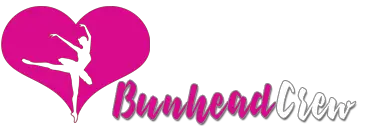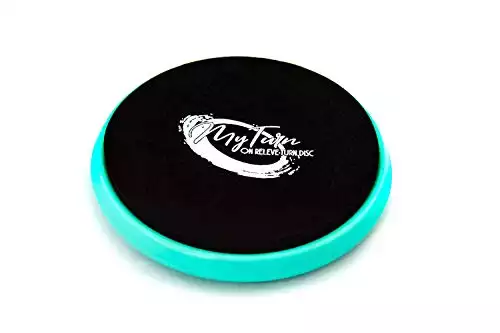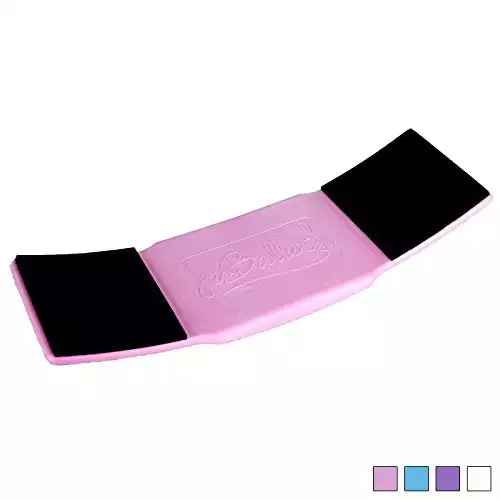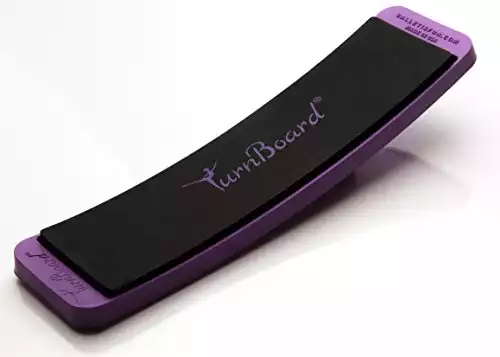This post may contain affiliate links. If you click & buy something it may result in me earning commissions at no additional cost to you.
Ask any group of bunheads about what they think of turning boards and you’ll have mixed answers. Whether or not to train using a turning board is somewhat controversial in the world of bunheads.
There are multiple things you need to look at to make sure your turning board will help you learn how to spin like the best ballerinas around.
Want it now? Skip reading and check out our top choice!
This slim, rectangular board you place under one foot is used by some as a training tool to help dancers, gymnasts and figure skaters learn to turn. While some say it can improve spotting, rhythm and getting the body used to multiple turns, others feel that it can encourage bad technique habits as some turn boards force the user to turn on a flat foot.
In ballet, turns are usually done on demi or full point and so the foot is in a different position and thus the weight distribution is different. Sometimes dancers who use turn boards frequently might have trouble pulling all the way up on releve or demi point when they do a pirouette without the board and might have a more difficult time with body placement and finding their center of balance.
However, dancers who have good turn technique established already but who are working on multiple turns (like 4 or more) might find it helpful to use a turn board with less friction to develop precise rhythm and spotting. If you are a bunhead who is unsure as to whether or not you should be using a turning board, you should start by asking your teacher. They will be the most qualified to tell you if this tool is something that can help you.
If you and your teacher determine that a turnboard would be helpful for you, here are the top 3 options that we feel are the best turning boards (or turn discs) for your money.
#1 My Turn Disc Portable Turning Board
Our #1 top choice is not a turning board at all in the traditional sense, but rather it is a turning disc. It is the My Turn Disc. What makes this option so great, is that it is designed to allow the dancer to practice turns from demi point or releve position. This actually reinforces good turning technique and proper body alignment. Since the bottom of the disc isn’t exactly flat (more spherical in shape) it requires more core strength and stronger ankles. This can help dancers to highlight their weaknesses and help them see where they need to improve.
#2 Turning Point by Je Ballet
Our #2 choice for best turn boards with the Turning Pointe turning board. This board is unique in that you can use it for both flat foot and releve turns. It looks like the more traditional turning boards, but it has a wide and flat center platform for a releve position. This board is made from a durable, Eco-friendly material that can hold up to 250lbs and won’t lose its shape.
#3 The Original TurnBoard by Ballet is Fun
Our #3 choice is the original TurnBoard used exclusively by dance star Kenzie Ziegler, and featured in the dance documentary First Position. It’s made in the USA and will not flatten out over time like less expensive boards. It will help you to focus on the individual components of turning and you can also still use it on releve. It is also available in 5 colors.
One big question that a lot of people have is whether or not turn boards or discs will damage the floor. None of the turning boards/discs listed above will damage your floor as long as you are using them on a perfectly clean, hard floor. However, if there are few tiny grains of sand or any itty bitty crumbs under the turnboard, they could potentially scratch the floor. To ensure that your floor doesn’t get scratched, I would recommend that you use a portable marley dance floor like this one found on Amazon. It comes in 4 different sizes: 16”, 24”, 32” and 48” and provides the perfect surface to practice using your turn board at home. Or you can look at our article on creating a DIY home dance practice studio here.





